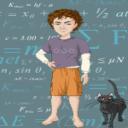Yahoo Answers is shutting down on May 4th, 2021 (Eastern Time) and beginning April 20th, 2021 (Eastern Time) the Yahoo Answers website will be in read-only mode. There will be no changes to other Yahoo properties or services, or your Yahoo account. You can find more information about the Yahoo Answers shutdown and how to download your data on this help page.
Trending News
Expanding Universe : Cosmological redshift?
Disregarding Cosmological Red shift.
What other evidence points toward / collaborates, or is in favour of / the expansion of the Universe and the increasing rate thereof?
Links; would be much appreciated.
Quote1: // Older galaxies are further away. //
Mmm.. Older/ younger, is not really saying anything and is still based on redshift (we could say that the more distant galaxies we see are in their younger state of evolution in comparison to our local time line observations: but I know what you mean; "if you know what I mean" )
Galaxy age: The apparent finite speed of light propagation may or may not have bearing on apparent galaxy age / evolution, but without the doppler effect "redshift" it has no bearing on expansion; and without Cosmological Red shift - has no bearing on accelerating rate expansion.
Quote2 : // Expansion "is so well established by thousands of astronomical observations of various types (essentially all of modern astronomy) // "
Can you supply me with just one, or maybe two, examples [Links] from said "thousands" which do not use redshift in the determination of said data?
.
Quote3: // "such as the homogeneity of th
Quote3: // "such as the homogeneity of the cosmic microwave background." //
Sorry, current understanding of CMBR is red shift dependent.
7 Answers
- Anonymous8 years agoFavorite Answer
Doesn't look like there is much other evidence, apparently galaxies are moving apart, although there doesn't seem to be any actual visual images seen of galaxies moving apart, assuming they appear to move slowly at great distances, so maybe it would take a lifetime to see them move apart, only redshift is evidence, if you interpret redder galaxies as galaxies moving away from us due to dopplar shift, but not all galaxies are moving away from us, some are moving towards us? which doesn't make sense? with an expanding Universe theory? They should all be moving apart?
However the further away galaxies get, the redder they get? so there is some sort of correlation with redness and distance, suggesting redshift theory is somewhat valid, but galaxies matter in the distant past may have been redder? because it was hotter, with larger more expanded atom's creating a red shift effect,
- orpheus_swordLv 58 years ago
No, the only evidence directly for expansion is redshift. Now, there is other evidence which suggests that the Universe was smaller in the past, such as the homogeneity of the cosmic microwave background. Of course this doesn't show the expansion is accelerating --- that comes exclusively from the redshift of distant supernovae (and the finders of such were recently awarded the Nobel Prize).
- cosmoLv 78 years ago
Well, the expansion is one thing, the increasing rate (or acceleration) is another. The former is so well established by thousands of astronomical observations of various types (essentially all of modern astronomy) that to figure out how it could possibly wrong is very hard indeed. The acceleration is a fairly recent result and has only about 5 sigma statistical significance in the data. It could be wrong without wrecking very much in modern cosmological theory --- in fact, explaining the acceleration theoretically has not really been done. Saying it's "Dark Energy" just gives a name to the problem, it doesn't explain it. Nevertheless, you can't just dismiss a 5 sigma result.
- nebLv 78 years ago
There are certain types of nova's that will always emit their light at the same intensity. Since intensity of light falls of with the square of the distance from the source, these nova's can be used to calculate the nova's distance from earth, even when these nova's are in distant galaxies. The nova's also emit their light at the same frequency which makes assessment of their redshift very accurate as a measure of velocity. When you plot the redshifts as a function of distance for these novas, the curve indicates that not only is the universe expanding, but 7 billion years ago the rate of expansion increased.
These measurements are very accurate. Unless there is some unknown physical phenomena that is giving us the illusion of an expanding universe, the redshift/distance evidence is compelling.
- How do you think about the answers? You can sign in to vote the answer.
- ?Lv 57 years ago
You might answer your own question if you read my theory, given below, it should help.





